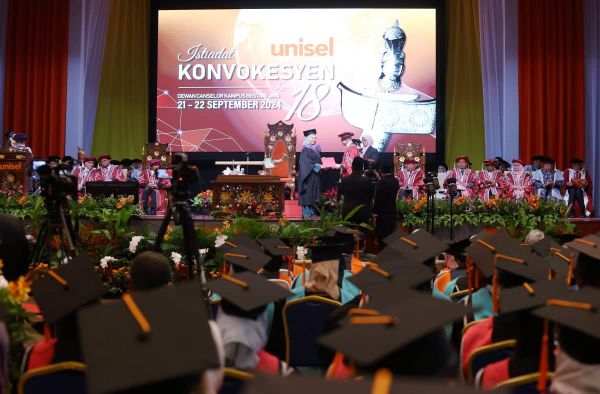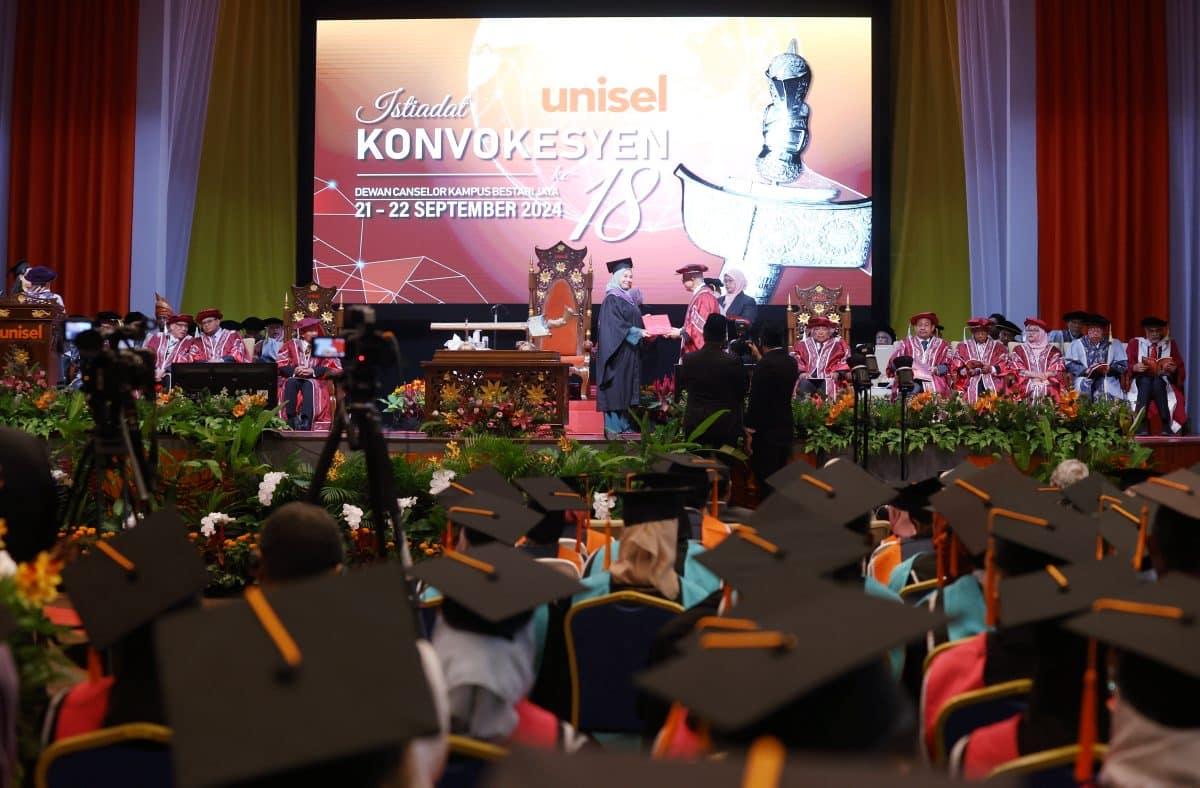PUTRAJAYA, Nov 1 — The number of graduates increased to 5.98 million in 2024, with the unemployment rate declining to 3.2 per cent, in line with the strong growth of the labour market, according to the 2024 Graduates Statistics released by the Statistics Department (DOSM) today.
Chief Statistician Datuk Seri Mohd Uzir Mahidin said the positive economic and labour market environment throughout 2024 contributed to an increase in the number of graduates, accounting for 22.3 per cent of the working-age population aged 15 years and above.
“Of this total, 5.14 million were active in the labour force, resulting in a high Graduate Labour Force Participation Rate (GLFPR) of 86.0 per cent.
“Degree holders accounted for 54.9 per cent (3.28 million persons), while diploma holders represented 45.1 per cent (2.70 million persons).
“Year-on-year, the number of degree graduates in the labour force rose by 5.4 per cent, while diploma holders increased by 3.2 per cent, driven by better job opportunities and lower unemployment rates,” he said in a statement.
In line with the Madani government's commitment to strengthening graduate employability, Uzir said various initiatives have been introduced under Budget 2024, including the opening of access to up to RM2 billion in funds from the HRD Corporation levy to finance the salaries of new graduates, and the continuation of programmes like the Graduates Training and Placement Scheme (MySTEP).
“These initiatives reflect the government's continuous efforts in empowering a high-knowledge workforce, in line with the nation's aspiration towards a high-income and innovation-driven economy,” he said.
Uzir said in 2024, the number of employed graduates grew by 4.6 per cent to 4.98 million compared to 4.76 million in 2023, in tandem with Malaysia’s improving labour market.
About two-thirds, or 67.8 per cent, of employed graduates were in the skilled category, amounting to 3.38 million persons, with most working as professionals (57.2 per cent), followed by technicians and associate professionals (24.4 per cent) and managers (18.4 per cent).
"Graduates in the semi-skilled category made up 31.0 per cent (1.54 million persons), while those in the low-skilled category accounted for only 1.2 per cent (57,500 persons).
“Employment among skilled and semi-skilled graduates each recorded positive growth of 5.0 per cent and 3.6 per cent respectively, while the low-skilled category increased by 11.0 per cent,” he said.
By economic sector, Uzir said the majority of employed graduates were in the services sector, comprising 77.6 per cent or 3.86 million persons, followed by the manufacturing sector (13.4 per cent; 667,300 persons) and the construction sector (6.3 per cent; 313,100 persons).
The agriculture and mining and quarrying sectors accounted for 1.7 per cent (83,900 persons) and 1.0 per cent (49,200 persons), respectively.
“Skill-related underemployment remains a challenge, not only in Malaysia but also globally. Malaysia has taken proactive measures to address skill-related underemployment and remains committed to aligning workforce qualifications with labour market needs,” he said.
In 2024, the number of graduates employed below their qualifications increased by 3.9 per cent to 1.60 million persons, bringing the graduate skill-related underemployment rate down to 32.2 per cent.
“This achievement places Malaysia ahead of countries such as South Korea (36.8 per cent), Indonesia (42.2 per cent), and the Philippines (56.7 per cent), demonstrating efforts to reduce skill mismatch.
“Although Malaysia still trails advanced economies such as the United Kingdom (28.5 per cent), the United States (27.3 per cent), and Australia (27.5 per cent), the downward trend indicated potential for further improvement in the coming years," he said.
Uzir added that although the national Female Labour Force Participation Rate (LFPR) stood at 56.2 per cent in 2024, the Female Graduate Labour Force Participation Rate (GLFPR) was significantly higher at 83.4 per cent.
Meanwhile, he said graduate salaries continued to rise in 2024, with the median monthly salary and wage increasing by 2.5 per cent to RM4,521 (2023: RM4,409), while the mean salary rose by 8.1 per cent to RM5,330 (2023: RM4,933).
“All states recorded positive growth in both median and mean monthly graduate salaries in 2024 compared to the previous year. The three states with the highest median graduate salaries were Kuala Lumpur (RM5,888), followed by Putrajaya (RM5,723) and Selangor (RM5,207),” he said.
On graduate unemployment, he said the rate declined by 0.2 percentage points to 3.2 per cent compared to 3.4 per cent in the previous year.
“Consequently, the number of unemployed graduates decreased by 0.8 per cent to 165,900 in 2024, from 167,300 in 2023. A more positive trend was observed among active job-seeking graduates, with 61.1 per cent securing employment within three months."




